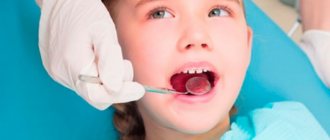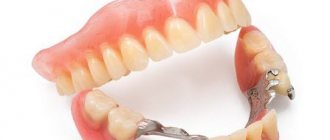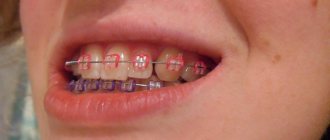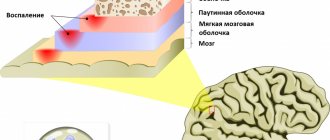Features of the procedure
Tooth extraction is not performed without indications. We perform treatment either planned or emergency. In both cases, a preliminary diagnosis is carried out.
The reason for the procedure may be:
- periodontitis or periodontitis;
- root canal trauma;
- planned orthopedic treatment;
- complex tooth crown injury;
- developmental anomalies;
- neoplasms in the tooth area.
Extraction can be carried out in a simple way, when the crown is simply separated from the gum tissue and the entire tooth is removed, or in a complex way, in which the dentist dissects the gum or periosteum.
Root removal
How is the root of a tooth removed if the tooth is completely destroyed? Despite this situation, extraction is not always recommended. If, after diagnosis, the doctor determines that the root can be used for an inlay, then the tooth is restored with a crown. But if there is pain, an unpleasant smell and taste, or swelling has developed, then dental care is required urgently. In this case, the question of whether to remove the roots of the teeth is decided in favor of the operation, since the neglected condition can also lead to the loss of neighboring elements.
Regardless of the chosen technique, pain relief and X-ray control are required after removal. This allows you to make sure that there are no root fragments in the cavity, since it is often loose and can crumble under slight pressure from the forceps.
Temperature as a sign of pathology
Immediately after a tooth is extracted, the open socket is in no way protected from infection. If the removal was simple, then after a few hours a film forms, blocking the path of pathogenic microorganisms. With complex extraction, the wound turns out to be too open and deep, so it takes much more time for the formation of natural protection. The overall healing period takes from 3 days to 2 weeks.
Extraction (removal) of a tooth in a person causes stress for the body on a psychological and physiological level. An increase in body temperature is a peculiar manifestation of the reaction to the procedure. Additional local symptoms are bleeding from the socket, swelling and redness of the gums. The patient's general health may also deteriorate, accompanied by weakness, dizziness, and sometimes nausea.
Many patients begin to worry whether there may be a fever after tooth extraction, because everyone knows that an increase in body temperature is a sign of an inflammatory process. However, dentists claim that this sign is just an indicator of tissue healing and stress suffered by the body. But only if there are no other symptoms of an unnatural process, the temperature does not rise above 37.5 °C and lasts no more than 3 days.
Temperature after dental treatment
A slightly elevated temperature after dental treatment is a normal reaction to intervention in the body’s tissues, especially after treatment of complex diseases (pulpitis, periodontitis). Sometimes weakness and drowsiness may appear, which can be relieved with antipyretics, but you should not get carried away with them.
If three days have passed after treatment and the fever does not go away, you should consult a doctor: he will conduct an additional examination and prescribe the necessary treatment.
What a high temperature may indicate
Dentists note that the temperature mainly increases after the removal of wisdom teeth, impacted units, or with a concomitant inflammatory process.
When a patient has a temperature of 38 °C or more for several days after wisdom tooth removal, the reason may be the development of:
- granulomas (nodular formations) - pathological formations form on the remains of roots that the doctor did not remove at the extraction stage;
- alveolitis (inflammation of the socket) - the provoking factor is violation of the dentist’s recommendations for wound care, perforation of the walls during surgery, weak immunity or inflammation of the throat;
- osteomyelitis - a process of purulent-necrotic damage to the jaw bone, with a high probability of abscess and gangrene;
- hematomas - occur when blood vessels are damaged during extraction and can provoke a purulent process and the formation of a cyst;
- infections - lack of proper care and antiseptic treatment will lead to rapid penetration of infection into the hole and the development of a pathological process.
After tooth extraction, the temperature may rise due to concomitant sinusitis. It is possible that the dentist may make mistakes, which, in addition to damaging the walls of the socket, may involve leaving foreign bodies (for example, a cotton swab) in the open wound or insufficient treatment of the socket.
In what other cases does hyperthermia occur?
A visit to a maxillofacial surgeon and surgery is a stressful situation. The temperature can rise even against the background of emotional experiences.
Possible reasons for the increase in temperature after molar extraction:
- ARVI, acute respiratory infections, relapse of tonsillitis - intervention in the oral cavity causes a decrease in immunity. Therefore, surgery can be a provoking factor in chronic sore throats, making the patient more susceptible to pathogenic flora. Rhinorrhea, sneezing, coughing, and pain when swallowing are added to hyperthermia.
- Alveolitis is an infection of the tooth socket. After its removal, a blood clot forms in the socket.
- Its task is to prevent wound infection. If the doctor's recommendations are not followed - eating, chewing on the operated side, frequent rinsing - the clot detaches and the wound becomes infected. The result is inflammation, pus, severe pain and an increase in temperature to pyretic values.
- Mistakes by a dental surgeon when removing a tooth include excessive tissue trauma, leaving fragments and parts of the root in the socket.
If any unpleasant symptoms appear after removal of a molar, incisor or molar, you should contact an oral and maxillofacial surgeon.
When to see a doctor
After wisdom tooth removal, a temperature of 37 °C without accompanying signs of inflammation is considered normal. There is no need to worry about such indicators. The temperature returns to normal within three days. No action needs to be taken.
You should consult a doctor if, after tooth extraction:
- the temperature lasts for 4 days or more;
- body temperature 38 °C or more;
- the pain does not decrease, but becomes more intense;
- there is severe swelling;
- after 2 days the wound bleeds;
- pus is released from the hole.
You can take medications on your own to lower your temperature if the reading is above 38°C. Touching the wound, trying to clean it, or using any traditional methods is not recommended. If you suspect complications after tooth extraction, you should visit your dentist.
How to help yourself at home
A cold does not mean that you have to wait for recovery and endure toothache. To get rid of unpleasant sensations and minimize the likelihood of complications, you should:
- Do not ignore the requirements for careful hygiene of teeth and gums. Even if you feel unwell, you need to brush your teeth twice a day, and after each meal or sweet drink, rinse your mouth with clean water.
- Take symptomatic medications that are used for ARVI, as they contain painkillers that will help eliminate pain.
Try not to chew hard food on the side of the diseased tooth until you go to the dentist; it is better to switch to soft food for a while.
Specialist help
In a situation where after tooth extraction the temperature remains at 38 °C, it is dentists who provide assistance. You should not waste time visiting a therapist or other specialist. It is advisable to contact the same doctor who performed the operation.
Treatment necessarily begins with diagnostics, which includes examination and x-rays. Once the cause of the patient’s pathological condition is identified, methods for eliminating it are determined.
Treatment methods depend on the factor that provoked the increase in temperature:
- incomplete removal of the tooth root, formation of a cyst or granuloma - cleaning the hole, treating with an antiseptic, prescribing antibiotics;
- damage to soft tissues - cleansing (in case of a purulent process), treatment with an antiseptic solution, suturing and prescribing antibiotic drugs;
- infection of the socket - high-quality cleaning of the socket, installation of drainage, treatment of the wound with an antiseptic, prescription of a course of antibiotics, removal of the drainage, repeated antiseptic treatment;
- osteomyelitis - opening of the gums, cleansing the bone from nicrotic tissue, applying a medicinal application, antiseptic treatment, taking antibiotics, re-diagnosis, removing the application and suturing.
After treatment, body temperature may also rise within normal limits. Rehabilitation will be more difficult and longer.
Dentists advise monitoring body temperature after tooth extraction, especially if it is a complex operation. To reduce the risk of complications, you should strictly follow all doctor's recommendations. If pathological symptoms appear, there is no need to ignore them. Even a preventive visit to the dentist can prevent serious consequences.
Is it possible to treat teeth if you have a cold?
If the high temperature is caused by ARVI, herpes or other infectious diseases, then it is better to reschedule the appointment. The body at this moment is weakened and tuned to eliminate the disease, which means that the recovery process after dental treatment will be delayed. If you have a runny nose or cough, it will be difficult to sit in the dental chair during treatment. In addition, there is a high risk of spreading infection to the staff and other patients of the clinic.
However, there are situations when treatment cannot be delayed. In this case, you need to consult with your doctor, preferably by phone. He will decide whether to subject the weakened body to dental intervention or not.
To lower the temperature or not to lower it?
If the thermometer does not rise above 38 degrees, taking antipyretics is not required - this is the body’s protective reaction to the invasion of bacteria and viruses. To alleviate the condition, painkillers and anti-inflammatory drugs are prescribed. It makes sense to lower the temperature only in cases where it rises significantly above 38 degrees.
It's not always worth lowering the temperature
Periodontitis
This is a rather serious disease when periodontal tissue becomes inflamed. It develops if the infection from a tooth with pulpitis leaves its limits, accompanied by severe toothache.
Symptoms of periodontitis:
- Redness of the gums, swelling.
- Fever.
- Swelling of the cheek is quite possible.
- The lymph nodes under the jaws become large.
- Subjectively, it seems that the tooth suffering from periodontitis has grown in size.
FAQ
• Is it painful to remove a tooth?
Painless tooth extraction using local anesthetics is carried out by absolutely all dental clinics. But if “freezing” is not enough, then it is better to go to a private clinic that provides all types of pain relief.
• How do you know when a tooth needs to be removed?
If it is very loose or the crown is completely destroyed, then most likely it will be removed. In other cases, accurate diagnosis is necessary.
• Is it possible to have a tooth removed if you have a cold?
Surgical intervention is unacceptable in the presence of an acute infection, including acute respiratory infections or influenza. This is due to the high probability of infection of injured tissues.
• Is it possible to remove a tooth if you have sinusitis?
The operation is not performed during exacerbation of the disease.
Indications for tooth extraction
Extirpation is done when therapeutic treatment is impossible or before prosthetics. It can be planned or emergency. It is carried out using a simple or complex method. In the first case, the dental unit is removed from the socket using forceps, and in the second, dissection of the gums, alveolar bone, and sawing of the roots into fragments may be required.
Indications for emergency surgery:
- the presence of purulent inflammation, fistula, cyst;
- acute pain that is not relieved by medication;
- fracture of the crown, root.
Planned extraction is done if:
- advanced caries, if the area of the carious cavity of the crown is more than 70 percent, the pathology has spread to the root part;
- pulpitis in a complex root system, when it is impossible to properly clean the canals (usually in a figure eight);
- periodontitis with stage 3 or 4 mobility;
- third molars that interfere with neighboring ones cause changes in bite, facial asymmetry, neurological pain, pericoronitis;
- supernumerary, dystopic, impacted teeth, which cause various disorders in the dental system;
- orthodontic indications for prosthetics, installation of braces.
Experienced dentists always strive to preserve the integrity of the dentition, so radical measures are usually taken in the absence of a positive result of therapeutic treatment. After the procedure and recovery period, acute pain goes away, but chewing function worsens when removing molars or aesthetics when extracting incisors or canines.











